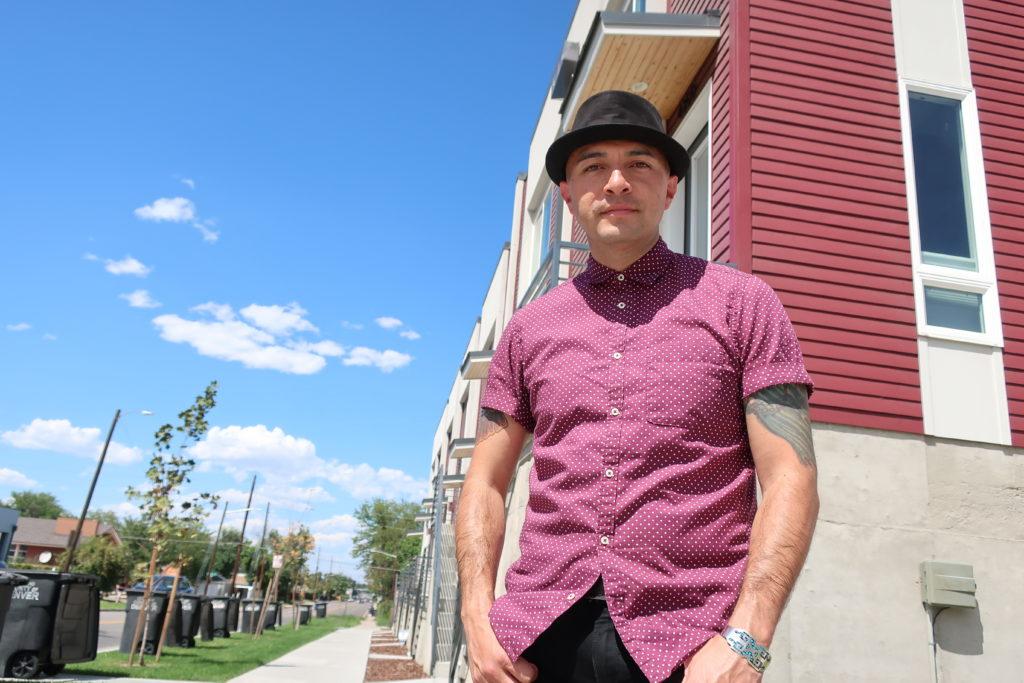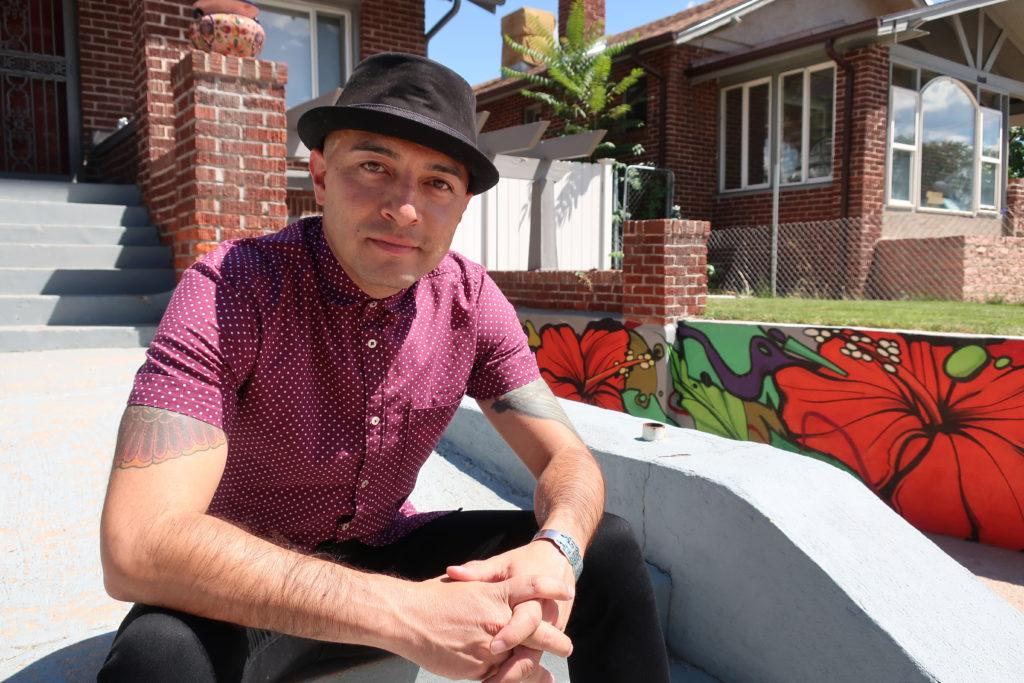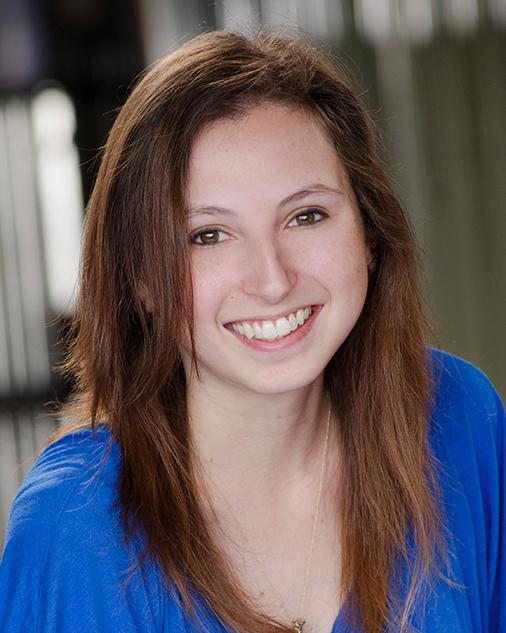
Colorado’s newest poet laureate, Bobby LeFebre, can point out the exact path he used to take as a child to get from his home in Sunnyside, North Denver to his grandparents’ house only a few streets over.
“I’d run down the block here,” he said driving through the neighborhood he stills lives in today. “I went to middle school here at Horace Mann. Yeah, so that’s where I fell in love with arts and culture actually.”
Last month, LeFebre became the state’s first poet laureate of color, and its youngest ever. It’s a role he’s still trying to figure out.
“I am really interested in using poetry as a tool and a foot in the door to discuss bigger issues and to connect with communities about what they’re going through and what matters to them,” he said.
LeFebre is no stranger to using poetry and art to talk about divisive topics. His play about gentrification, “Northside” continues to add dates at Su Teatro and reflects what he’s seen happen to his neighborhood over the years.
One spot in Sunnyside that’s seen the effects of north Denver’s development boom is the corner of Pecos St. and 43rd Ave. Now, a strip of sparkling new townhomes occupy the spot, but when LeFebre was growing up it was the place his parents got married.
“The VFW was really the place that working-class families rented out for all their celebrations,” he said looking up at the rows of red- and cream-painted townhomes. “When a relative would pass there would be funeral celebrations here after the mass.... It was something that existed here as sort of a monument to the community.”

LeFebre thinks the word "gentrification" is kind of a cliché at this point. It’s used so often to describe change that he thinks it’s lost some of its meaning. LeFebre said one thing that’s missed in the conversation about gentrification is the historical marginalization of people of color.
“At some point, we were relegated to these neighborhoods through racist practices like redlining,” he said. “And now that it’s hot and sexy to be here again, folks are coming back and saying, ‘This is ours now.’ ”
But LeFebre isn’t saying anyone should never move to these neighborhoods. It’s an issue of cultural erasure that needs to be avoided, he said.
“If someone moves into a neighborhood and completely disregards what was there previously, I think that’s where conflict arises,” LeFebre said.
LeFebre bought his home in Sunnyside five years ago and his family, who have lived in the neighborhood since the 1960s, are still there today.
Back in the car, LeFebre points out where some of them live — older, smaller homes usually sandwiched between bigger, angular, modernized ones.
He said the family still gathers weekly at his grandma’s house for dinner.
“There are certain things that trip her out,” LeFebre said about his grandma’s reaction to the neighborhood change. “When she started seeing, you know, white folks walking dogs after dark, that was an interesting revelation.”

Just another few blocks over at La Raza Park, officially known as Columbus Park, is where LeFebre spent a lot of time during his middle and high school days.
“Every now and then we’d, you know, ditch, go to Chubby’s, come here and eat,” he said.
The name of the park has long been contested. Locals call it La Raza to represent its Chicano roots.
“The ongoing conversation of Columbus vs. La Raza Park is an interesting conversation,” LeFebre said. “Especially as we’re talking about, you know, what ownership of space means and who gets to name things.”
Last Sunday, the park played a big role in a Federal Boulevard Cruise where dozens of lowriders were on display at La Raza and Barnum Parks.
These cultural hubs in LeFebre’s neighborhood reveal a lot about the poet himself. His work will always be intertwined with his identity, his community and his culture, he said.
The parks, which are parts of a neighborhood that people pass by and through every day, work sort of like what LeFebre says he wants his work as poet laureate to be -- if you look closely, they're gateways to understanding the neighborhood, the people who live there, the city of Denver, the history of Colorado.
“Whether it’s a responsibility or an innate, organic need that I have to express these issues through my art, it’s what feels most genuine to me,” he said. “I’m grateful that the governor and the selection committee and our state [have] chosen a poet laureate who comes from this tradition.
“My approach is completely different, my aesthetic is different...I’m not really invested in upholding or maintaining that status quo. I don’t know how to do that. I don’t want to do that.”








